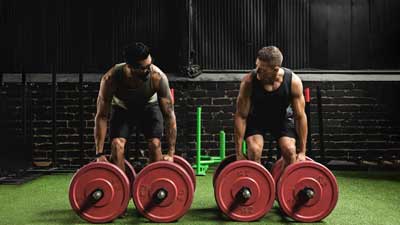
If you have just begun your gym journey, you might have come across terms like powerlifting and bodybuilding. While both involve lifting weights and building muscle, the approaches, techniques, and ultimate objectives differ significantly. We spoke to our expert Ishaan Arora, Karnal-based Body Building India Certified Fitness Trainer, who explained the difference between powerlifting and bodybuilding and how you can make informed choices based on your objectives.
Table of Content:-
Understanding Powerlifting

Focus on Strength
Powerlifting revolves around the goal of maximum strength. The primary goal is to lift as much weight as possible in three specific compound exercises: squat, bench press, and deadlift. “Powerlifters train to increase their One-Repetition Maximum (1RM) in these lifts, emphasising overall strength rather than sculpting specific muscle groups”, informed Arora.
Few Repetitions, Heavy Loads
“Powerlifting training involves low rep ranges with heavy weights. The workouts typically consist of sets with fewer repetitions, often in the range of 1- 6 reps per set”, added Arora. This approach helps powerlifters develop the neurological and muscular adaptations necessary for handling heavy loads.

Minimal Emphasis on Aesthetics
The primary focus in powerlifting is not on achieving a particular physique or aesthetic appearance. Powerlifters are more concerned with functional strength and performance in specific lifts rather than the sculpted physique associated with bodybuilding.
Also Read: Circuit Training for Fitness: Expert Lists Its Benefits And Purpose
Three Main Lifts
“Powerlifting competitions centre around the three core lifts—squat, bench press, and deadlift. Athletes are judged based on their performance in these exercises, aiming to lift the heaviest total weight across all three”, highlighted Arora.
Periodisation
Powerlifters often follow periodisation programs to strategically vary training intensity and volume over time. This approach helps in achieving peak strength during competitions.
Understanding Bodybuilding

Emphasis on Aesthetics
Bodybuilding places a significant emphasis on achieving a well-defined and aesthetically pleasing physique. Arora said, ‘Bodybuilders aim to develop each muscle group symmetrically, creating a sculpted appearance through a combination of size, definition, and proportion.”
High Repetitions, Moderate Loads
Unlike powerlifting, bodybuilding involves higher rep ranges with moderate to lighter weights. The goal is to induce hypertrophy or muscle growth by promoting cellular and metabolic stress through extended time under tension.
Comprehensive Muscle Development
Bodybuilders focus on isolating and developing individual muscle groups. Workouts often include a variety of exercises targeting specific muscles to ensure a balanced and proportionate physique.
According to the International Journal of Exercise Science, the best way to gain muscle mass is through bodybuilding training, which uses medium-to-heavy weights for 8–12 repetitions and many sets per muscle group.
Also Read: From Pilates To Swimming: Expert Lists Low-Impact Exercises Suited For All Fitness Levels

Posing and Presentation
In bodybuilding competitions, participants showcase their physiques through posing routines. Judges evaluate factors, such as muscle definition, symmetry, and presentation. Aesthetic appeal is a key component of success in bodybuilding competitions.
Nutrition and Cutting
Arora added, “Nutrition plays a crucial role in bodybuilding, with a focus on both bulking (muscle-building phase) and cutting (fat-loss phase). Bodybuilders often undergo specific dietary regimens to achieve a lean and shredded appearance during competitions.”
Bottomline
Arora concluded, “While both powerlifting and bodybuilding involve weightlifting and contribute to overall health and fitness, the key differences lie in their primary objectives, training methodologies, and desired outcomes. Powerlifting centres around maximising strength in specific compound lifts with a minimal focus on aesthetics, while bodybuilding prioritises the development of a symmetrical and visually appealing physique through targeted muscle growth and definition.”
[Disclaimer: This article contains information provided by an expert and is for informational purposes only. Hence, we advise you to consult your fitness trainer before starting any exercise regimen, especially if you are dealing with any injury.]
Also watch this video
How we keep this article up to date:
We work with experts and keep a close eye on the latest in health and wellness. Whenever there is a new research or helpful information, we update our articles with accurate and useful advice.
Current Version